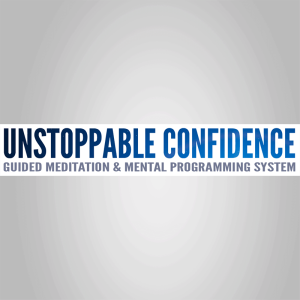Melissa D Shotell – Step-by-Step 3D Printing Your Own In-Office Clear AlignersAre you interested in getting into clear aligner therapy but unsure if they really work? Are you a general dentist interested in getting into orthodontics but not know where to start? Do you want to be able to 3D print your own aligners in-office affordably?This innovative and exciting covers diagnosis and treatment planning, how to get started with clear aligner laboratories, the differences in technology, step-by-step clinical procedures from taking records to delivering aligners and monitoring your patients until case completion. This course includes the “Fast Track Clear Aligners†entire curriculum including: the basics to getting you started with clear aligner treatment using traditional and digital methods for recording taking, step-by-step clinical and laboratory workflows, insurance/billing and growing your clear aligner practice through innovative marketing strategies. In addition, this online course features in-office 3D printing in-office (DIY) clear aligners. Create your own branded in-house clear aligners by designing and 3D printing your aligner cases. We teach you the secrets, step-by-step on how to set-up your cases (or outsource setup!) and then 3D print models for aligners, vacuum forming aligners, and then finishing and delivering them to the patient!The clear aligner course is eligible for up to 27 hours of continuing education credits.This course utilizes learning skills and educational content that is 50% projection slides and 50% video-based education. We emphasize simulated “LIVE†video-based techniques to demonstrate step-by-step clinical procedures including: impressions, digital scanning, bonding attachments, interproximal reduction (IPR), monitoring and troubleshooting steps, refinement and revision for case finishing, removing attachments and polishing, and placing the patient in retention. Additionally, the in-office aligner modules include step-by-step aligner software featuring ArchForm, Blue Sky Bio, and uLab, 3D printing your own models on Sprintray Pro, Formlabs, and Nextdent printers, and vacuum forming, trimming, and finishing your cases.To receive the best education possible, this course is broken down into 8 sections:Section I: Introduction to Clear Aligner Therapy, Principles of Tooth Movement, Identifying Aligner Cases and How to Work With Aligner ManufacturingCovering the basics of clear aligner treatment, including identifying cases in your practice, diagnosis and treatment planning, and reviewing aligner brand options.Topics include:Historical Overview of Clear AlignersIntroduction of Aligner Terminology Unique to Clear AlignersGoals of Aligner TreatmentIntroduction to Orthodontics and How Teeth MoveFundamentals of Diagnosis & Treatment PlanningIdentifying Cases in Your PracticeComparison of Major Clear Aligner Laboratories and Production MethodsSection II: Taking Records, Diagnosis & Treatment Cases, Submitting and Reviewing CasesFocuses on step-by-step procedures related to record making and taking including charting, photography, x-ray options, analog and digital impressions and submitting cases to clear aligner laboratories.Topics include:Overview of Records Necessary for Aligner TherapyComprehensive Overview and Clinical Demonstration of Photography TechniquesMaking Perfect PVS Impressions Even Align Will AcceptDigital Technology & Scanning Technology for Making Aligner Treatment SimpleUploading Cases to Invsalign and ClearCorrect and Evaluating Treatment SetupsSection III: Receiving Cases, Delivering Aligners, Placing Engagers, Performing IPR, Monitoring Treatment, Treatment Revision, Treatment Completion & RetentionA comprehensive review and clinical step-by-step procedural based education focusing on receiving cases in your office, unboxing, placing engagers/attachments, IPR, treatment in ideal cases, and mid-course correction during when treatment doesn’t go perfectly.Topics include:Invsalign and ClearCorrect Unboxing Cases and Preparing for Starting TreatmentDelivering Your First Aligner – Clinical Step-By-Step ProceduresBonding Attachments – Clinical TechniquesInterproximal Reduction Protocols and Step-by-StepSuccessful Treatment with Clear AlignersMonitoring Treatment and Troublehsooting When Teeth Don’t MoveFinishing Treatment and RetentionMake Your Own Clear RetainersSection IV: Business Skills For Incorporating Aligners Into PracticeThis section is a great way to get started with growing your practice and getting ready for doing more clear aligners. Preparing the office for both the clinician and teams to do more aligner treatment!Topics include:Choosing Treatment OptionsSetting Fees for Clear Aligner TreatmentOverview of Insurance Benefits and BillingCDT Codes for Orthodontics & AlignersUsing Social Media to Grow Your PracticeCase Presentation SkillsTeamwork Approach in Clear Aligner PracticeSection V: Case GalleryClear Aligners ROCK! This section highlights some of the cases and clinical conditions where clear aligner therapy is perfect. Emphasis is placed on great starting cases and treatment appropriate for your first case.Section VI: Introduction to In-Office Aligner TherapyThis section introduces and lays the foundation for how in-office aligner systems are made, they way they work, and approaches to implementing in a general practice or orthodontics practice! We also discuss why in-office aligners help rescue cases done by major laboratories and how to brand your in-office aligner systems!Topics include:In-Office Clear Aligner WorkflowsStaging Production of AlignersTracking CasesIdentifying Key Team Members for Producing AlignersUsing In-Office Aligners When Big Labs Don’t WorkCase Revisions When Cases Aren’t Tracking WellCase-Presentation SkillsSection VII: Laboratory and Software Workflows for In-Office AlignersChoosing the right software, laboratory equipment, and laboratory systems before jumping into in-office aligners is key! This captivating section of the online course covers the fundamental equipment needed, material choices for aligner trays, attachment templates, and retainers, and step-by-step software designing clear aligner cases!Topics include:What Equipment Do I Need to Purchase?Designing Efficient In-Office Production AreasWhat Vacuum Forming Material is Best for In-Office Aligners?What Software Can We Use to Design Aligners Cases?Step-by-Step with ArchForm softwareStep-by-Step with Blue Sky Bio softwareStep-by-Step with uLab softwareStep-by-Step using eXceedOutsourcing design for 3D printing and in-office aligner productionSection VIII: Step-by-Step Laboratory Techniques for In-Office Aligner FabricationThe secrets of in-office aligner production covered in detail step-by-step! This amazing section gets down to the details and workflows used to 3D Print dental models, cleaning and light curing the models, vacuum forming aligners, attachment trays, retainers, trimming and polishing, and delivering to the patent.Topics include:How Does 3D Printing Work and What Printers are Available for Aligners?What Resins Can we Use for 3D Printing?Cleaning, Post-Processing, and Light Curing Aligner ModelsPrinting Aligner Models with the Sprintray Pro 3D PrinterPrinting Aligner Models with the Formlabs 3D PrinterPrinting Aligner Models with the Nextdent 3D PrinterPrinting Stacked Models with the Nextdent 3D PrinterVacuum Forming for Attachment TemplatesVacuum Forming for Aligner TraysTrimming & Polishing TechniquesPackaging AlignersDelivering In-Office AlignersCourse CurriculumIntroduction to CourseStartIntroduction to Fast Track Clear Aligners & Step-by-Step In-Office Aligner Workflows (3:40)Section I – Introduction to Clear Aligner Therapy, Principles of Tooth Movement, Identifying Aligner Cases, and Working with Aligner ManufacturersStartChapter 1 – Introduction to Clear Aligner Basics (10:07)StartChapter 2 – History of Aligner Treatment (8:46)StartChapter 3 – Goals of Clear Aligner Treatment (7:26)StartChapter 4 – Principles of Orthodontic Tooth Movement (24:43)StartChapter 5 – Fundamentals of Diagnosis & Treatment Planning for Clear Aligners (36:40)StartChapter 6 – Identify Clear Aligner Cases in Your Practice (17:36)StartChapter 7 – Overview of Aligner Brands & Manufacturing Processes (23:25)StartChapter 8 – CE Credits Self AssessmentSection II: Taking Records, Diagnosis & Treatment Cases, Submitting and Reviewing CasesStartChapter 1 – Record Taking for Clear Aligner Therapy (6:48)StartChapter 2 –Clinical Photography for Clear Aligners (31:05)StartChapter 3 – Radiographs and X-Ray Records for Clear Aligners (18:38)StartChapter 4 – Making Impressions for Clear Aligners (32:44)StartChapter 5 – Digital Impression Techniques for Clear Aligners (57:18)StartChapter 6 – Submitting Cases to Doctor Portals for Aligner Services (92:12)StartChapter 7 – Reviewing Treatment Setup and Ordering Aligners (7:11)StartChapter 8 – CE Credits Self AssessmentSection III: Clinical Procedures from Delivering Aligners to Treatment CompletionStartChapter 1 – Unboxing and Evaluating Aligner Kits (12:10)StartChapter 2 – Delivering the First Set of Aligners (16:53)StartChapter 3 – Attachments – How They Work and How to Place (33:36)StartChapter 4 – Interproximal Reduction – Step by Step (32:51)StartChapter 5 – Monitoring Treatment Progress & Troubleshooting When Things Don’t Go Perfect (15:06)StartChapter 6 – Refinement, Revision, or Midcourse Correction… Getting Things Back on Track (7:39)StartChapter 7 – Evaluating When Cases are Near Completion and When to Get it Done (8:30)StartChapter 8 – Treatment Completion: Removing Attachments & Retention Techniques (100:58)StartChapter 9 – CE Credits Self AssessmentSection IV: Business Skills For Incorporating Aligners Into PracticeStartChapter 1 – Knowing Treatment Options & How to Set Fees (22:26)StartChapter 2 – Identify New and Potential Aligner Patients (6:41)StartChapter 3 – Billing Strategies for Dental Coverage & Insurance (12:33)StartChapter 4 – 7 Comprehensive Steps to Increased Aligner Case Flow (54:06)StartChapter 5 – CE Credits Self AssessmentSection V: Case GalleryStartChapter 1 – Case 1 (7:55)StartChapter 2 – Case 2 (5:53)StartChapter 3 – Case 3 (5:47)StartChapter 4 – Case 4 (7:30)StartChapter 5 – CE Credits Self AssessmentSection VI: Introduction to In-Office Aligner TherapyStartChapter 1 – Traditional Applications of In-Office Clear Aligners (6:36)StartChapter 2 – Comparing the Process of Traditional Aligner Laboratories vs. In-Office Aligners (8:29)StartChapter 3 – In-Office Workflows and Considerations Before Getting Started (22:49)StartChapter 4 – In-Office Clear Aligners When Traditional Methods Fail (31:06)StartChapter 5 – Case-Presentation and Branding Your Own Aligners (45:29)StartChapter 6 – CE Credit Self AssessmentSection VII: Introducing Laboratory and Software Workflows for In-Office AlignersStartChapter 1 – Understanding Laboratory Methods & Equipment Needed (17:01)StartChapter 2 – Reviewing Aligner Material Options for In-Office Aligners (16:47)StartChapter 3 – Software Options for In-Office Aligners (14:49)StartChapter 4 – Case Driven In-Office Aligner Step-by-Step & Qualities of a “Good Scan†(5:10)StartChapter 5 – Downloading STL Files from the Intraoral Scanner (4:39)StartChapter 6 – Cleaning Up “Non-Ideal†Scans Using Meshmixer with Dr. Scherer (32:15)StartChapter 7 – Archform Software Basics & Introduction (30:08)StartChapter 8 – Step-by-Step Archform Software to Complete Aligner Cases (84:06)StartChapter 9 – uLab Software Basics & Introduction (32:50)StartChapter 10 – Step-by-Step uLab Software to Complete Aligner Cases (48:26)StartChapter 11 – Step-by-Step Blue Sky Plan Software and Aligner Cases (92:13)StartChapter 12 – Working with eXceed (46:41)StartChapter 13 – CE Credit Self AssessmentSection VIII: Step-by-Step In-Office Aligner Laboratory FabricationStartChapter 1 – Reviewing 3D Printers and Printing Technology for Aligners with Dr. Scherer (62:48)StartChapter 2 – Getting the Sprintray Pro 3D Printer Ready for Printing Clear Aligner Models (6:34)StartChapter 3 – 3D Printing Clear Aligner Models with SprintRay Pro (7:33)StartChapter 4 – Printing Clear Aligner Models with Formlabs Printer (17:01)StartChapter 5 – Working with the Nextdent 5100 3D Printer in Orthodontics (14:44)StartChapter 6 – Getting the Nextdent 5100 Ready for Printing & 3D Printing Models (23:27)StartChapter 7 – Washing and Curing Techniques for 3D Printing with Dr. Scherer (34:58)StartChapter 8 – Finishing & Curing Clear Aligner Models from the Sprintray Pro (8:47)StartChapter 9 – Vacuum Forming Models for Attachment Templates Printed with SprintRay Pro (3:12)StartChapter 10 – Vacuum Forming Models for Aligners Printed with Sprintray Pro (7:44)StartChapter 11 – Trimming and Polishing Attachment Templates Printed with SprintRay Pro (10:05)StartChapter 12 – Trimming and Polishing Aligners Printed with SprintRay Pro (26:55)StartChapter 13 – Cleaning Up and Maintaining the Sprintray Pro (7:17)StartChapter 14 – Finishing & Curing Models Printed with Formlabs (6:56)StartChapter 15 – Vacuum Forming for Attachment Templates & Aligners Printed with Formlabs (8:58)StartChapter 16 – Trimming and Polishing Attachment Templates Printed with Formlabs (14:28)StartChapter 17 – Trimming and Polishing Aligners Printed with Formlabs (20:25)StartChapter 18 – Finishing & Curing Models Nextdent (5:58)StartChapter 19 – Vacuum Forming Attachment Templates & Aligners with Nextdent (1:21)StartChapter 20 – Trimming & Polishing Aligners with Nextdent (2:21)StartChapter 21 – Printing Stacked Models with Nextdent (12:18)StartChapter 22 – Finishing & Curing Stacked Models Nextdent (7:03)StartChapter 23 – Packaging Aligners for a Beautiful Case Presentation (3:39)StartChapter 24 – Delivering Aligners to the Patient (18:01)StartChapter 25 – Summary of In-Office Aligner vs. Traditional Methods (11:10)StartChapter 26 – CE Credit Self AssessmentCourse Completion & CE CreditsStartCourse Completion & CE Credits (1:01)
 Marisa Peer – I am Enough
₹8,466.00
Marisa Peer – I am Enough
₹8,466.00
 Mandy – 3 Day Manifesting Event Livestream from the Authentic Living Heartland
₹6,806.00
Mandy – 3 Day Manifesting Event Livestream from the Authentic Living Heartland
₹6,806.00
Melissa D Shotell – Step-by-Step 3D Printing Your Own In-Office Clear Aligners
₹14,940.00






